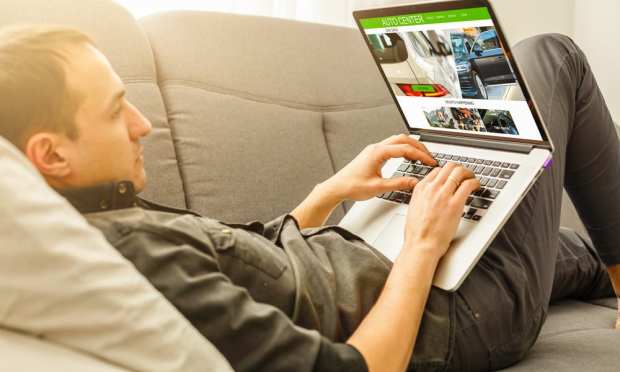Car Buyers and Sellers Prefer To ‘Click The Tires’ In The COVID Era

COVID-19’s economic impacts continue to roil the auto industry, but rather than hurt sales, the pandemic is just increasingly moving them to digital channels. The age-old process of “kicking the tires” of a vehicle at a local dealership is increasingly moving to deal-hungry shoppers “clicking the tires” in hopes of finding the perfect new ride online.
For example, despite the weak U.S. economy and hefty unemployment rate, the price the Americans are willing pay for a used pickup truck — and the distance they’re willing to travel to buy one — has never been higher.
CNBC reported Monday (Oct. 19) that there’s so much demand for full-size pickups that some buyers are willing to travel across the country for the right vehicle. And oftentimes, they’ll buy sight unseen without even haggling on price.
Paul Hennessy, CEO of online car-selling platform Vroom, recently told Karen Webster that consumers are often no longer willing to spend a day going to multiple dealerships in hopes of finding the best deal. After all, they know they can search through thousands of cars across the country, set up financing and have an automobile brought to their driveways all from the comfort of their homes.
“It’s going to be a real challenge for traditional dealerships that run brick-and-mortar sites very well to suddenly become eCommerce companies,” he said. “And I would suggest that there’s a big difference between having a website and being an eCommerce company, and between delivering a car in your neighborhood and having a nationwide logistics network.”
Supply Issues Are Also At Play
Other issues are also driving car prices higher despite the shaky economy. For example, there are tighter-than-usual supplies of some popular models due to COVID-related factory closures earlier this year.
Meanwhile, the used-car supply has gotten tighter as a result of fewer repossessions taking place as lenders and borrowers reach loan-deferral agreements amid the pandemic.
“We haven’t seen as many repos as we historically have at this time of year because of the government and banks providing longer grace periods,” Joe Kichler, vice president of car-transportation firm Manheim Logistics, recently told PYMNTS.
Urban Flight
Another factor: Americans leaving big cities for the greater open space that suburbs provide.
Vroom’s Hennessey said some city dwellers who never needed a car before are buying them as part of moves to the suburbs. “I would specifically say that as a result of that migration, that shifting of city demand is really more of a move to suburban demand,” he said.
And another force behind the digital transformation of car and truck buying has to do with public transportation — or more specifically, people’s newfound reluctance to use it.
That’s not just good news for online car sellers, but also for vehicle transportation and logistical businesses like Manheim.
“As more dealers turned to these [digital] platforms, they started shipping from farther away,” Manheim’s Kichler said. “So, we [see] an uptick in the number of new clients needing help with longer moves.”
No Reverse
Such new trends seem unlikely to change even after the pandemic ends — something AutoNation Chairman and CEO Mike Jackson noted in his company’s recent earnings call.
“For digital,” Jackson said, “this whole disruptive period with corona is an inflection point from which there’s no turning back.”
